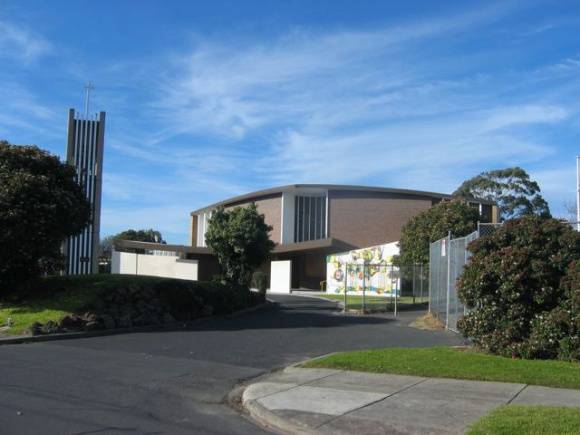| Back to search results » | Back to search page » |
|
HOLY NAME CATHOLIC PRIMARY SCHOOL & CHURCH COMPLEX
Location2-26 ROBB STREET, RESERVOIR, DAREBIN CITY LevelIncluded in Heritage Overlay |
|
Statement of Significance
What is significant? - The interior and exterior of the church, designed by J.P. Saraty and constructed by 1964 and and the mural and artworks created for the church by Voitre Marek. The Modernist form of the church and its setting behind an open forecourt is integral to the significance of the place. The later additions to school and church and the 1966 Presbytery are not significant. How is it significant? The Holy Name Church at 2-26 Robb Street, Reservoir is architecturally and aestheticallysignificant as a fine example of a Modernist church. The building's form and scale is of particular note and other elements in the complex including the artworks by Voitre Marek and the Bell Tower are of aesthetic value and contribute to the significance of the complex. The significance value of the church and the Marek artworks are enhanced by their rarity value (AHC criteria B.2, F.1). Socially, the Holy Name Church complex at 2-26 Robb Street, Reservoir is significant as a church and school that is known, used and valued by the local community.
The Holy Name Church complex at 2-26 Robb Street, Reservoir, built in stages from 1939 to 1966, is significant. The following elements contribute to the significance of the place:
- The 1939 School and 1953 additions to the School and the first Presbytery.
The Holy Name Church complex at 2-26 Robb Street, Reservoir is of local historic, architectural, aesthetic and social significance to Darebin City.
Historically, the Holy Name Church complex at 2-26 Robb Street, Reservoir is significant as a place that reflects in its stages of its development the evolution of Reservoir into a residential area of Darebin in the mid twentieth century. The expansion of the complex in the post-war era reflects the growth in Catholic congregations in Melbourne as a result of migration. It is also important for its associations with the Catholic church as the parish centre in East Preston and with Father Anthony J. Cleary who was appointed Parish Priest in 1952 and during his time expanded the church and its facilities. The design of the 1964 church reflects the revolutionary changes in Catholic church design as a result of the reforms made by the Second Vatican Council and is important as an early example of the work of architect J.P. Saraty (AHC criteria A.4, D.2, H.1)
Group
Education
Category
School - Private




